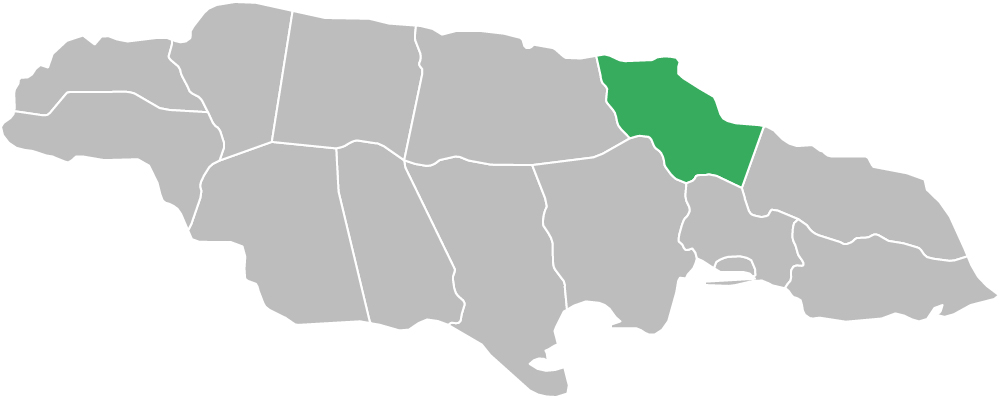Saint Mary Parish, Jamaica

Saint Mary (also St Mary) is a parish situated in the north-eastern section of Jamaica. It is located in the county of Surrey, bordered by Portland to the East, St Ann to the West, parts of St Catherine and St Andrew to the South, and the Caribbean Sea to the north.
St Mary is mostly mountainous, reaching up to almost 4000 feet at the highest point.
The parish has three (03) main rivers: the Rio Nuevo River, Wag Water and White Rivers. These rivers are often slow, and will create swamps.
The parish is administered by one parochial board, the St. Mary Municipal Corporation.
Land Area: 611.3 sq km (236.0 sq mi)
Capital Town: Port Maria
History of Saint Mary
St Mary Parish is well known for being one of the first sections of the island to be occupied by the Spaniards. In 1655, after the English captured Jamaica from the Spanish, the area around the town of Puerto Santa Maria became known as St Mary. Port Maria, the current capital of the parish was the second town built by the Spaniards on the island. Today, this parish includes the former parish of Metcalfe and part of the former parish of St. George. Numerous national monuments still stand in the parish such as the town of Rio Nuevo which holds historical significance for being the site of the last battle between the invading English and the defending Spaniards who eventually had to flee to Cuba.
In 1760, the most serious rebellion in Jamaica’s history broke out around Port Maria, eventually spreading to almost the entire island. The leader of this rebellion was a Coromantee slave called Tacky, who belonged to the Frontier Estate. Fort Haldane, now Grays Charity, was seized and ammunition taken. The rebels then moved inland. Many whites were killed.
After Emancipation, free villages were formed in St. Mary but the parish still basically remained one with big estates. At the beginning of the 19th century there were 63 sugar factories in the parish but by the end of the century only three existed.
With the decline of sugar, banana cultivation took its place. In the late 1930s, St. Mary played a prominent role in the creation of Jamaica Producer’s Association which was set up to prevent the continuation of the monopoly on bananas held by the United Fruit Company and other purchasing organisations. Under the umbrella of the Association, the Jamaica banana growers banded together to ship and market their own produce.
Popular Towns in Saint Mary Parish
- Annotto Bay
- Highgate
- Oracabessa
- Port Maria (The capital of St. Mary)
- Richmond
List of places in Saint Mary Parish